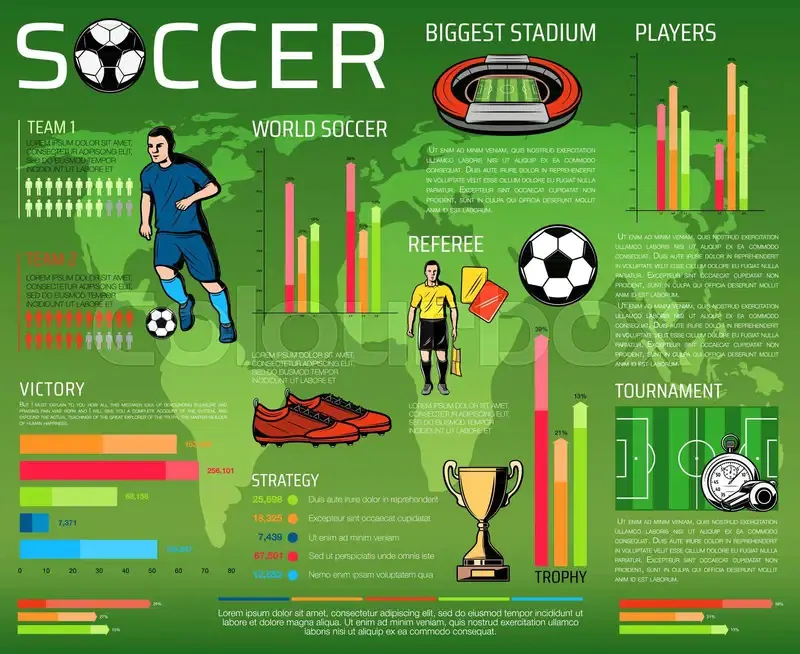Soccer competitions around the world are structured in a variety of formats, but two of the most common and contrasting systems are the points-based league format and the knockout tournament format. Each system offers a unique experience for teams, players, and fans alike. This article explores the fundamental differences between these two structures, examining their advantages, disadvantages, strategic implications, and iconic examples.
Understanding the Points-Based System
The points-based system is used in league competitions, where each team plays a set number of matches, often both home and away, against every other team in the league.
How It Works:
- Win: 3 points
- Draw: 1 point
- Loss: 0 points
At the end of the season, the team with the highest number of points is declared the champion.
Common Examples:
- Premier League (England)
- La Liga (Spain)
- Serie A (Italy)
- Brasileirão (Brazil)
Advantages:
- Rewards consistency across a full season.
- Provides a comprehensive test of team strength and depth.
- Reduces randomness; a single bad game doesn’t ruin a team’s chances.
Disadvantages:
- Can become predictable if one team dominates early.
- Lower stakes in individual matches.
- Mid-table teams may have little to play for late in the season.
Exploring the Knockout Format
The knockout format, often seen in cup competitions, involves teams being eliminated after a single loss (or two-legged tie in some cases).
How It Works:
- Teams are paired against each other.
- The winner progresses; the loser is eliminated.
- Can include one-leg or two-leg matches.
Common Examples:
- FIFA World Cup (from Round of 16 onward)
- UEFA Champions League (knockout stages)
- Copa do Brasil
- FA Cup (England)
Advantages:
- High stakes create drama and excitement.
- Allows for underdog stories and surprises.
- Compact tournament length.
Disadvantages:
- One bad day can end a team’s journey.
- Less margin for error.
- Random draws can produce unbalanced brackets.
Strategic Differences Between the Two Formats
Points-Based Leagues:
- Long-term planning: Teams manage player fitness over the season.
- Tactical conservatism: A draw can be an acceptable result.
- Squad depth: Crucial for success due to volume of games.
Knockout Competitions:
- Risk-taking tactics: Aggression may be necessary to advance.
- Focus on each match: Every game is potentially the last.
- Mental toughness: Pressure intensifies with each round.
Fan Engagement and Excitement
Both systems cater to different types of fan expectations:
- Points system: Appeals to purists who value long-term performance.
- Knockout format: Appeals to thrill-seekers who enjoy sudden turns of events.
Memorable Knockout Moments:
- Germany 7-1 Brazil in the 2014 World Cup semifinal.
- Real Madrid’s comeback against Manchester City in the 2022 Champions League.
Iconic League Triumphs:
- Leicester City’s unexpected 2015–16 Premier League title.
- Palmeiras’ dominance in recent Brasileirão seasons.
Hybrid Competitions
Some tournaments incorporate both formats:
- UEFA Champions League: Group stage (points) + knockout rounds.
- World Cup: Group stage (points) followed by knockouts.
These hybrid structures aim to combine the best of both worlds—ensuring consistency and drama.
Financial Implications
League Format:
- Steady revenue through ticket sales and broadcasting.
- Predictable schedule benefits planning and sponsorship.
Knockout Format:
- Spikes in viewership during high-stakes games.
- Potentially fewer matches but higher per-game value.
Impact on Player Psychology
In Points Systems:
- Players can recover from mistakes.
- Motivation must be maintained over months.
- Pressure builds slowly over time.
In Knockouts:
- Intense pressure per game.
- Every mistake is magnified.
- Requires peak mental focus in short bursts.
Influence on Coaching Decisions
Coaches adapt strategies depending on the format:
- League play: Rotating squads, prioritizing stamina and form.
- Knockouts: Best XI selections, tactical surprises, late substitutions.
Coaching Examples:
- José Mourinho: Known for mastering knockout tactics.
- Pep Guardiola: Excels in league formats with tactical consistency.
Controversies and Debates
Soccer pundits and fans often debate which system is superior:
- Meritocracy vs. Emotion: Leagues crown the best over time; cups reward peak moments.
- Luck factor: Higher in knockouts due to one-off nature.
- Underdog opportunity: More common in knockouts.
Case Study: Brazil’s Domestic Calendar
Brazil uses both formats extensively:
- Brasileirão (League): 38 matches per team.
- Copa do Brasil (Knockout): Open to surprises.
- State Championships: Often follow hybrid or knockout styles.
This mix adds diversity but also challenges in scheduling and player workload.
Conclusion: A Game of Contrasts and Complements
The difference between points and knockout systems is more than structural—it shapes the very narrative of soccer competitions. Each format brings its own flavor:
- Leagues showcase resilience, consistency, and long-term strategy.
- Knockouts celebrate bravery, spontaneity, and high-stakes drama.
Rather than viewing them as rivals, these systems should be seen as complementary. Together, they enrich the footballing calendar, provide varied paths to glory, and captivate fans across the globe with stories of triumph, heartbreak, and redemption. Whether you’re tracking league tables or counting down to the next elimination match, one thing is certain: soccer’s beauty lies in its diversity.

